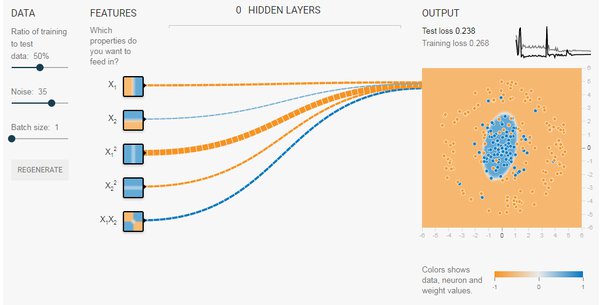


Crossing features, also known as interaction terms is a product of two or more predictor variables that are included in the model. Interaction terms are used when the effect of one predictor variable on the response variable depends on the value of another predictor variable.
Example #1
Building a logistic regression model that predicts whether a patient will develop a disease based on their age and BMI. The effect on BMI on the likelihood of developing the disease depends on the patients age and thus we could include an interaction term between age and BMI in the logistic regression model. The interaction term would look something like age * BMI
Example #2
Building a logistic regression model to predict whether a customer will purchase a product based on their age and income. Age an income may have a complex relationship with the likelihood of purchase, and it may be useful to include an interaction term between and and income to capture the complexity.
Necessity
When there is reason to believe that the relationship between the response variable and the predictor variables is not purely additive (if the effect of one predictor variable on the response variable changes depending on the value of another predictor variable), then it may be useful o include interaction terms in the logistic regression model!
Overfitting
Including interaction terms in logistic regression may lead to overfitting if there are too many interaction terms or if they are not carefully selected. It is important to use domain knowledge and statistical techniques such as:
in order to avoid overfitting.
Types of Interaction Terms
Interpretation
The interpretation of interaction terms can be complex. The coefficient of an interaction term represents the change in the log odds of the response variable associated with one unit increase in the predictor variable, while holding the other predictor variable constant. The direction and magnitude of the coefficient can provide insights into the nature of the relationship between the predictor variable and the response variable.
Non Linear effects
In some cases, the relationship between the predictor variables and the response variable may be non-linear, and interactions terms may not be sufficient to capture this complexity. In such cases, it may be useful to include higher-order terms, such as quadratic or cubic terms or to use non-linear regression techniques.
Practical Notebooks
Sources